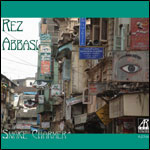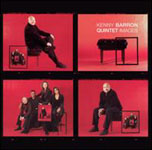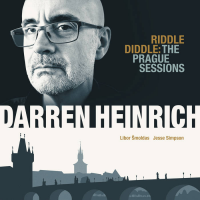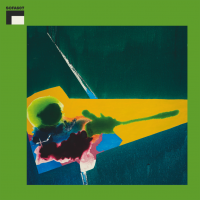Home » Jazz Articles » Album Review » At War With Self: Torn Between Dimensions
At War With Self: Torn Between Dimensions
With an approach that could be called progressive metal, At War With Self has some precedence in bands like King Crimson and the solo work of ex-Genesis guitarist Steve Hackett, but there's less flamboyance on display. Yes, Snelwar can shred with the best of them, but he's clearly more interested in forwarding the concepts behind the material, which, along with the more obvious progressive leanings, incorporates elements of classical, jazz, and even a tinge of bluegrass.
Part of it is Snelwar's use of an array of electric and acoustic guitars, along with mandolin and synth programming, as parts of a larger orchestral palette. "The God Interface" may revolve around a weighty rhythm, but underneath the fuzz-toned guitars are a bevy of acoustic tracks developing a rich layer that alternately creates a thick ambience and moves to the front-and-centre. And as often as not, Snelwar's guitar-as-orchestra approach serves as a backdrop for Manring's lyrically significant lines.
While Manring and Snelwar are both fine soloists—Manring, in particular, has fashioned a career with a style of bass playing that, like the late Jaco Pastorius, is more about equality rather than serving as merely a rhythm section instrument—there's very little grandstanding. Instead, compositions like the title track feature Snelwar developing small motifs and, occasionally, soloing over them, but Torn Between Dimensions is more about the three clearly skilled players working in service of the compositions.
Snelwar's writing often takes the form of mini-suites, with sometimes seemingly disparate ideas popping out of nowhere, only to be drawn together by the song's close. "Grasping at Nothing" begins with mandolin arpeggios driven by aggressively distorted guitars, but quickly breaks down into a light acoustic affair, with Zonder's light cymbal work providing gentle propulsion. Segueing into a funkier segment with Snelwar's acoustic strumming serving as a rhythmic basis for Manring's melodicism, things don't rest there for long before Snelwar is back layering metallic guitars and the tune turns into something altogether more ominous. And all this within the space of five short minutes.
Snelwar has said that Torn Between Dimensions was envisioned as a loose concept album. No long-form themes that continue to reassert themselves throughout, but the record's sequencing offers a sense of continuity that makes it more satisfying when taken in as a whole. In this intriguing case of multiple personality, what emerges at the end is an integrated voice that will appeal to fans of progressive rock with a metal edge.
Visit Glenn Snelwar , Michael Manring and Mark Zonder on the web.
Track Listing
The God Interface; Torn Between Dimensions; A Gap in the Stream of Mind Part One; Grasping at Nothing; Coming Home; The Event Horizon; A Gap in the Stream of Mind Part Two; Run; A Gap in the Stream of Mind Part Three; At War with Self
Personnel
Glenn Snelwar (electric and acoustic guitars, mandolin, e-bow, keyboards and string section programming), Michael Manring (fretless bass and e-bow), Mark Zonder (drums and percussion)
Album information
Title: Torn Between Dimensions | Year Released: 2005 | Record Label: Free Electric Sound
Tags
PREVIOUS / NEXT
Support All About Jazz
 All About Jazz has been a pillar of jazz since 1995, championing it as an art form and, more importantly, supporting the musicians who make it. Our enduring commitment has made "AAJ" one of the most culturally important websites of its kind, read by hundreds of thousands of fans, musicians and industry figures every month.
All About Jazz has been a pillar of jazz since 1995, championing it as an art form and, more importantly, supporting the musicians who make it. Our enduring commitment has made "AAJ" one of the most culturally important websites of its kind, read by hundreds of thousands of fans, musicians and industry figures every month.



















